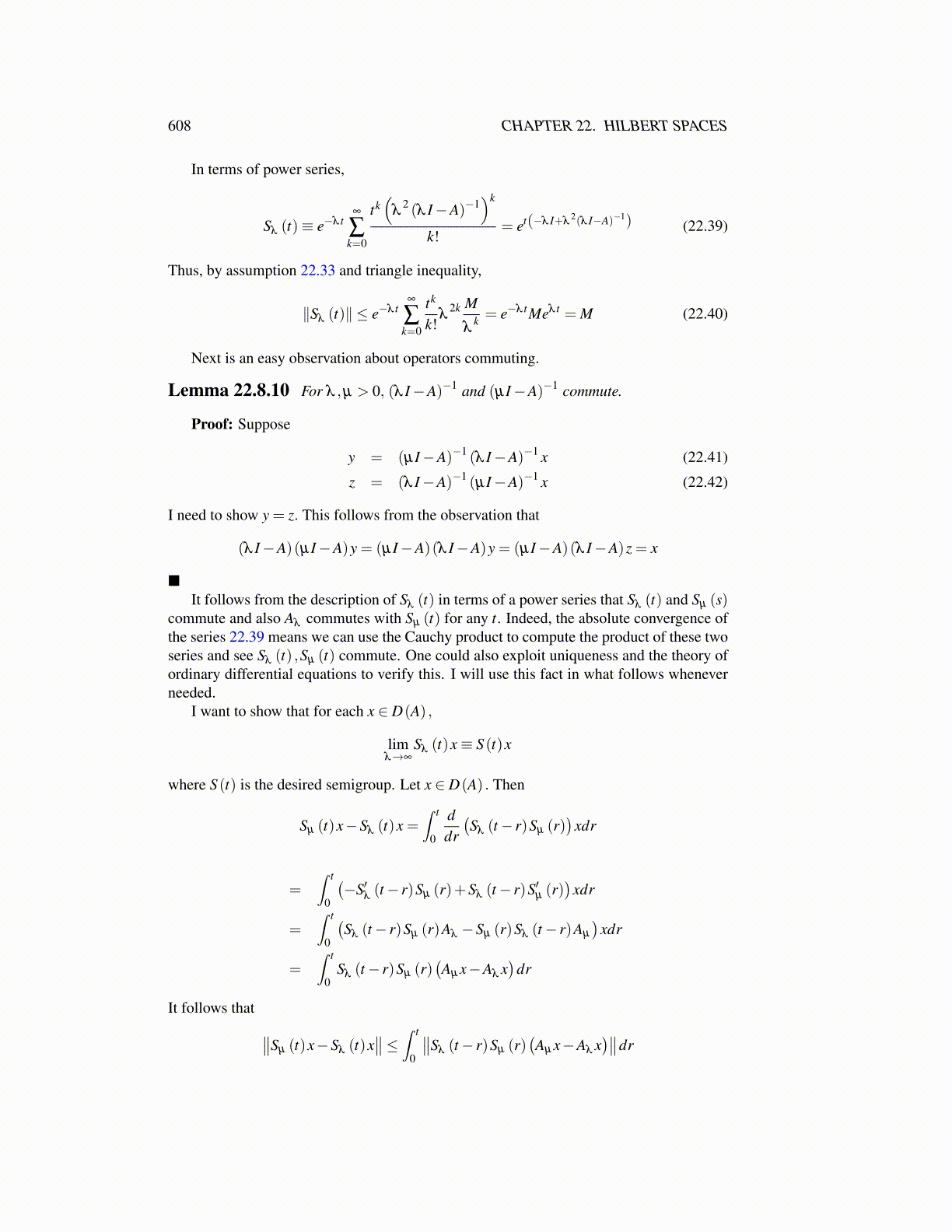
608 CHAPTER 22. HILBERT SPACES
In terms of power series,
Sλ (t)≡ e−λ t∞
∑k=0
tk(
λ2 (λ I−A)−1
)k
k!= et(−λ I+λ
2(λ I−A)−1) (22.39)
Thus, by assumption 22.33 and triangle inequality,
∥Sλ (t)∥ ≤ e−λ t∞
∑k=0
tk
k!λ
2k M
λk = e−λ tMeλ t = M (22.40)
Next is an easy observation about operators commuting.
Lemma 22.8.10 For λ ,µ > 0, (λ I−A)−1 and (µI−A)−1 commute.
Proof: Suppose
y = (µI−A)−1 (λ I−A)−1 x (22.41)
z = (λ I−A)−1 (µI−A)−1 x (22.42)
I need to show y = z. This follows from the observation that
(λ I−A)(µI−A)y = (µI−A)(λ I−A)y = (µI−A)(λ I−A)z = x
■It follows from the description of Sλ (t) in terms of a power series that Sλ (t) and Sµ (s)
commute and also Aλ commutes with Sµ (t) for any t. Indeed, the absolute convergence ofthe series 22.39 means we can use the Cauchy product to compute the product of these twoseries and see Sλ (t) ,Sµ (t) commute. One could also exploit uniqueness and the theory ofordinary differential equations to verify this. I will use this fact in what follows wheneverneeded.
I want to show that for each x ∈ D(A) ,
limλ→∞
Sλ (t)x≡ S (t)x
where S (t) is the desired semigroup. Let x ∈ D(A) . Then
Sµ (t)x−Sλ (t)x =∫ t
0
ddr
(Sλ (t− r)Sµ (r)
)xdr
=∫ t
0
(−S′
λ(t− r)Sµ (r)+Sλ (t− r)S′µ (r)
)xdr
=∫ t
0
(Sλ (t− r)Sµ (r)Aλ −Sµ (r)Sλ (t− r)Aµ
)xdr
=∫ t
0Sλ (t− r)Sµ (r)
(Aµ x−Aλ x
)dr
It follows that ∥∥Sµ (t)x−Sλ (t)x∥∥≤ ∫ t
0
∥∥Sλ (t− r)Sµ (r)(Aµ x−Aλ x
)∥∥dr